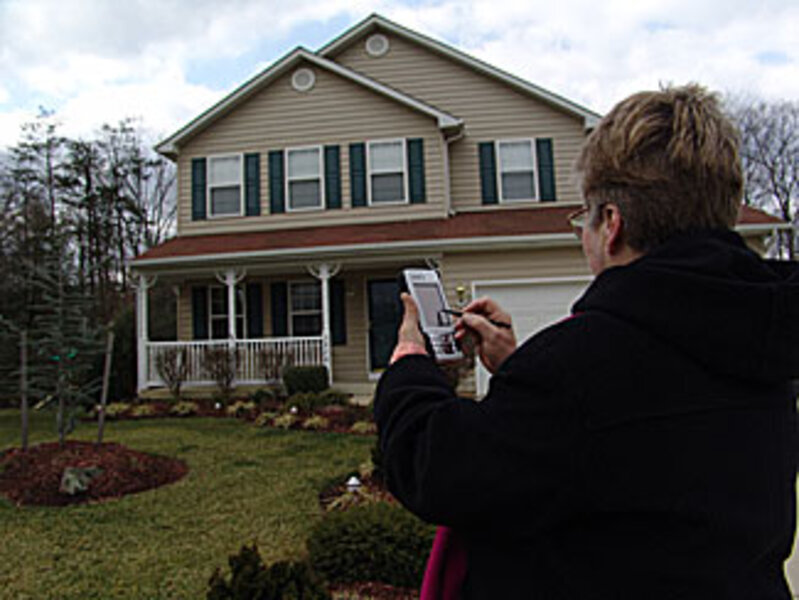Counting heads in new ways: The census goes high-tech
Loading...
Steve Spence wondered what that unfamiliar car was doing in his driveway. Outside, he found a man toting a hand-held computer standing near the open doors of the garage.
The man explained he was recording the GPS coordinates of Mr. Spence's Winthrop, N.Y., home for the 2010 Census and left promptly. But for Spence, the whole experience felt "a little creepy."
"The ambulance knows how to get here when there's a 911 call. Our house number is on the mailbox out front," Spence says. "Why do they actually have to come onto the property, come to my front door, and take a reading? They could take a reading out from the end of the driveway."
But, as the Census Bureau prepares to take the 2010 census, the end of the driveway simply won't do. It's hoping that new technology will make next year's census the most accurate in its 220-year history.
To improve accuracy, the Census Bureau has armed fieldworkers with customized hand-held computers (HHCs) as they go door-to-door to every residence in the United States, in a process referred to as address canvassing. The bureau hopes this canvassing, which began in mid-March and will likely conclude by the end of June, will ensure that the census has the most accurate and thorough mailing list possible when it comes time to mail the census surveys next year.
"It allows us to make sure that addresses and physical locations match up better," explains Arnold Jackson, associate director for the 2010 Decennial Census Programs. This means more questionnaires will reach their intended recipients.
"It also helps with precise boundaries, so that your congressional, state, legislative, and town council [officials], which use census data that rely on boundaries, can have more precise delineation," says Mr. Jackson.
The number of people recorded in each boundary affects, foremost, how many congressional representatives are allocated to each state. But the outcome also determines how $300 billion in federal funds is divided between local, state, and tribal governments.
By recording the longitude and latitude of every front door in the country, the Census Bureau hopes to improve its accuracy beyond what was possible under its old paper-based system.
Previously, a census worker would travel to a residence and hand plot its location on a paper map. Later, a second census worker would interpret and manually input those hand-drawn marks into a computer system.
The new technology, which includes 151,000 HHCs, allows census fieldworkers to confirm or correct the locations of residences already on the census mailing list, as well as add new or previously unrecorded structures.
"Especially in this economy," says one fieldworker, who asked to remain anonymous because of the oath of office all census workers must take, "it's been emphasized. We train people to look for all possibilities: trailers, campsites, caves even."
The HHCs, which cost just over $500 each, are about twice the size of a smart phone. Fieldworkers can use them to send brief text messages to their supervisors, but the devices cannot place or receive phone calls.
Still, the use of GPS technology for the census just doesn't sit right with Spence and many others, who worry about the security of the data the HHCs collect and how the government will use the GPS maps once they're compiled.
"I try not to be a suspicious person, but it appears the data they're collecting goes way beyond what's necessary for the job," Spence says. "Some things make you sit back and go, 'Hmm, that's interesting.' This is one of those things."
The Census Bureau's Jackson insists that "privacy of information is paramount," and he notes that the HHCs have passed rigorous third-party security testing. They include fingerprint authentication and data encryption, and they can also be remotely deactivated if they are lost or stolen.
Most important, the information the census collects is protected by Title 13 of the United States Code, which allows census data to be presented only in statistical form. Presenting any information that would identify an individual is strictly prohibited, as is sharing that information with any government office outside the Census Bureau, including the FBI or the CIA.
"We think this sets the stage for a great census next year," Jackson says. "We're going to have a great address list and a more precise housing unit location. We just think we're off to a great start."





